Stainless steel vs nonstick cookware comparison—discover key differences, pros and cons, and the best uses for each to choose the right pans for your kitchen. Imagine searing a juicy steak to perfection with a stainless steel pan, while effortlessly flipping delicate eggs in a nonstick skillet for breakfast. Each cookware type has unique strengths, from durability and heat control to easy cleanup, making it essential to understand which fits your cooking style best.
What is Stainless Steel Cookware?
Stainless steel cookware is a kitchen essential made from an alloy of steel, chromium, and sometimes nickel, designed for durability, corrosion resistance, and a polished, professional look. It’s a top choice for both home cooks and professional chefs who value performance and longevity.
What kind of Stainless Steel would use?
The most common types are fully-clad stainless steel pans, stainless steel stock pots, and multi-ply saucepans. High-quality stainless steel cookware often uses high carbon stainless steel for cooking surfaces, ensuring food safety and preventing metallic taste. Many home cooks prefer these for their versatility in frying, sautéing, boiling, and oven baking.

Advantages of Stainless Steel Cookware
- Excellent durability—resists scratches, dents, and rust.
- High heat tolerance—can withstand high oven and stovetop temperatures.
- Non-reactive surface—safe for cooking acidic foods like tomato sauce.
- Even heat distribution—especially in fully-clad or multi-ply designs.
Limitations of Stainless Steel Cookware
- Not naturally nonstick—requires oil or proper preheating to prevent food from sticking.
- Heavier weight—can be difficult to handle for some users.
- Price point—high-quality sets can be expensive compared to nonstick cookware.
- Avoid acidic foods—can cause discoloration and shorten cookware lifespan.
Best applications of Stainless Steel Cookware
Perfect for searing steaks, browning chicken, making stir-fries, or simmering soups. Stainless steel cookware is ideal for recipes that need even heat and browning, making it a must-have for serious cooking enthusiasts.
What is Nonstick Cookware?
Nonstick cookware refers to pots and pans coated with a special nonstick surface—such as PFOA-free ceramic coating, PTFE coating, or marbled nonstick coating—that prevents food from sticking during cooking. This makes it easier to prepare delicate recipes like eggs, pancakes, and fish without tearing or leaving stubborn residue. Designed for healthy, low-oil cooking, nonstick frying pans and saucepans allow you to use less butter or oil while still achieving even heating and great flavor. Popular among home cooks for its easy cleanup and lightweight design, nonstick cookware works on a variety of stovetops including gas, electric, and induction, making it an ideal choice for everyday meals.
What kind of Painting does Nonstick Cookware use?
Nonstick cookware is typically made with aluminum or stainless steel bases coated with a nonstick layer, such as PTFE or ceramic. Popular choices include nonstick frying pans, skillets, and saucepans designed for everyday cooking. Many modern options are PFOA-free nonstick cookware, ensuring safe food preparation.
Advantages of Nonstick Cookware
Nonstick cookware offers easy food release and quick cleanup, making it perfect for delicate recipes like omelets or fish fillets. The smooth coating allows you to cook with less oil, ideal for low-fat or healthy meals. Lightweight designs make them easy to handle, even for beginner cooks.
Limitations of Nonstick Cookware
The coating can wear over time if exposed to high heat or metal utensils. Nonstick cookware may not be suitable for searing steaks at very high temperatures, and can scratch easily.
Best applications of Nonstick Cookware
Best for frying eggs, making pancakes, sautéing vegetables, and preparing sauces that require gentle heat. If you’re looking for the best nonstick frying pan for eggs or a set that’s easy to clean nonstick pots and pans, this cookware type is an excellent choice.
Stainless Steel vs Nonstick, What is the Difference?
🔬Material Composition & Safety Standards
Stainless Steel Cookware
Core Materials: Primarily iron alloyed with chromium (≥16% for FDA compliance) and nickel (8–10% in 304/316 grades). FDA CPG 7117.05 regulates heavy metal migration limits (e.g., lead ≤0.1ppm).
Safety: Inert metal surface; no chemical coatings. Withstands temperatures >500°F (oven/grill-safe). 316 surgical-grade steel is hypoallergenic (low nickel leaching).
U.S. Compliance: Passes 3% acetic acid migration tests for acidic foods (tomato sauce, wine).
Nonstick Cookware
Core Materials: Aluminum or steel base coated with PTFE (polytetrafluoroethylene) or ceramic. FDA 21 CFR 175.300 mandates PFOA-free coatings and restricts solvent residues.
Safety: Temperature-limited to 500°F—overheating releases toxic perfluoroisobutylene (PFIB) (EPA risk alert).
Health & Safety: Lab Data Comparison
| Risk Factor | Stainless Steel | Nonstick |
| High-Heat Toxicity | Zero chemical release (stable metal) | >500°F releases PFIB (acute toxin) |
| Acidic Food Reaction | Minimal metal leaching (<0.1mg/L Ni) | Coating stable; aluminum base corrodes if scratched |
| Lifespan | 10–30 years (scratch-resistant) | 1–3 years (coating degrades) |
| Allergy Risk | Low (316 grade ideal for Ni-sensitive users) | None (no metal contact) |
🔬Performance & Best Use Cases
Stainless Steel Dominates When You Need:
- High-heat searing: Achieves 400°F+ surface temps for Maillard reaction (vs. nonstick’s 350°F max), creating crispy steaks or fond for pan sauces.
- Oven-to-table versatility: Safe up to broiler temps (e.g., finishing au gratin dishes).
- Durability: Withstands metal utensils and dishwashers. Tri-ply construction (e.g., stainless/aluminum/stainless) ensures even heating.
Nonstick Excels For:
- Low-oil delicate cooking: Eggs, fish, or pancakes release effortlessly—70% less oil needed vs. stainless.
- Quick cleanup: Wipe clean with a soft cloth (no soaking).
- Beginner-friendly: Forgiving for low-heat simmering or reheating.
How Should I Buy?
Your Cooking Style → Best Pick
─────────────────────────
High-heat searing/degazing → Stainless steel (tri-ply)
Low-oil eggs/fish → Nonstick (ceramic-coated/PFOA-free coated)
Oven-to-stove versatility → Stainless steel (500°F-safe)
Budget-limited/replacement → Nonstick (replace every 2 yrs)
💎 Pro Tip: 68% of U.S. chefs own both—using stainless for searing and nonstick for delicate tasks.
View more Cookware Collection
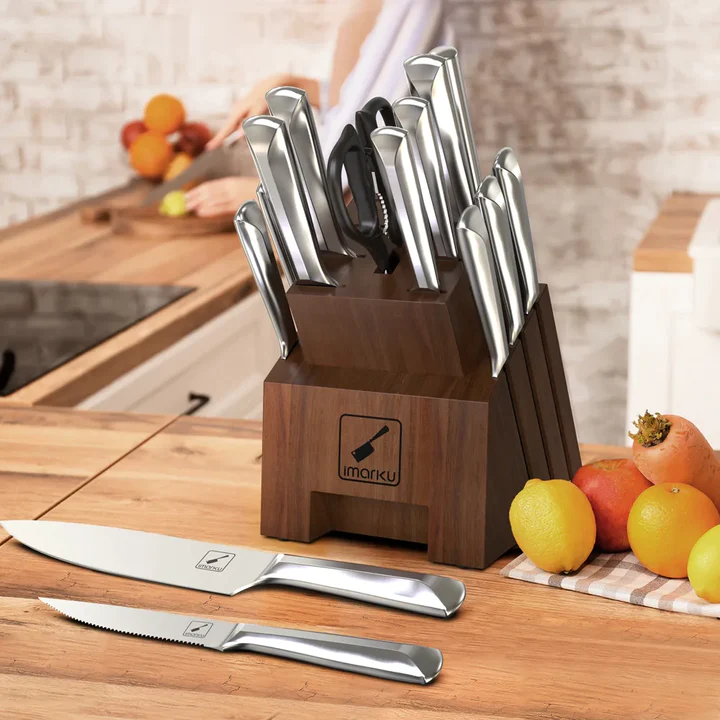
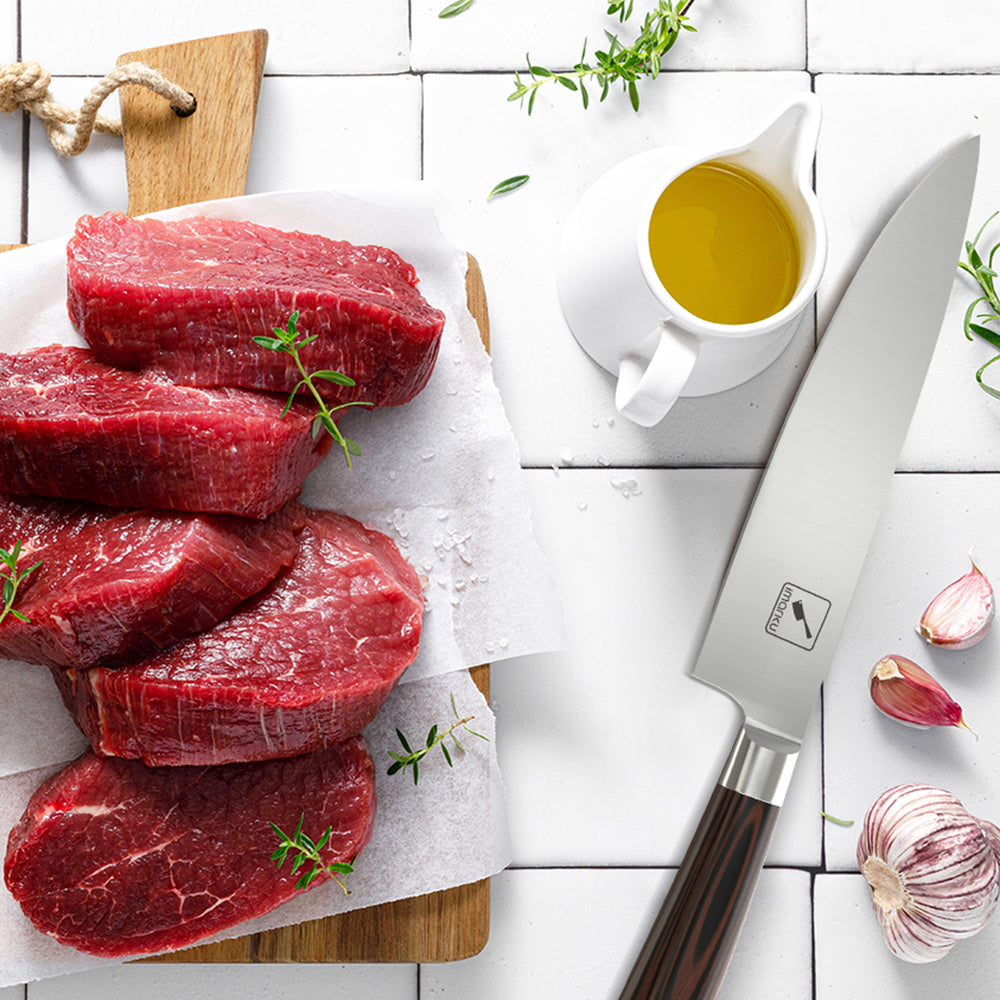









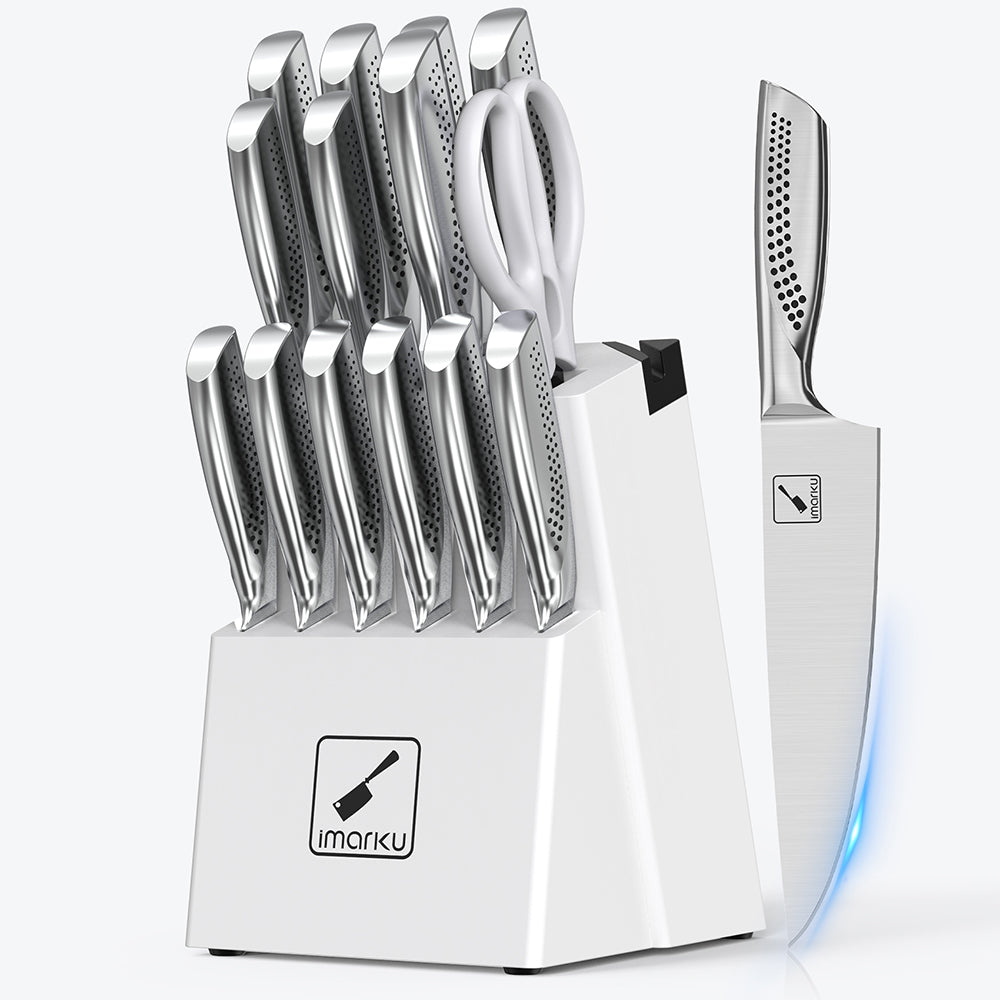
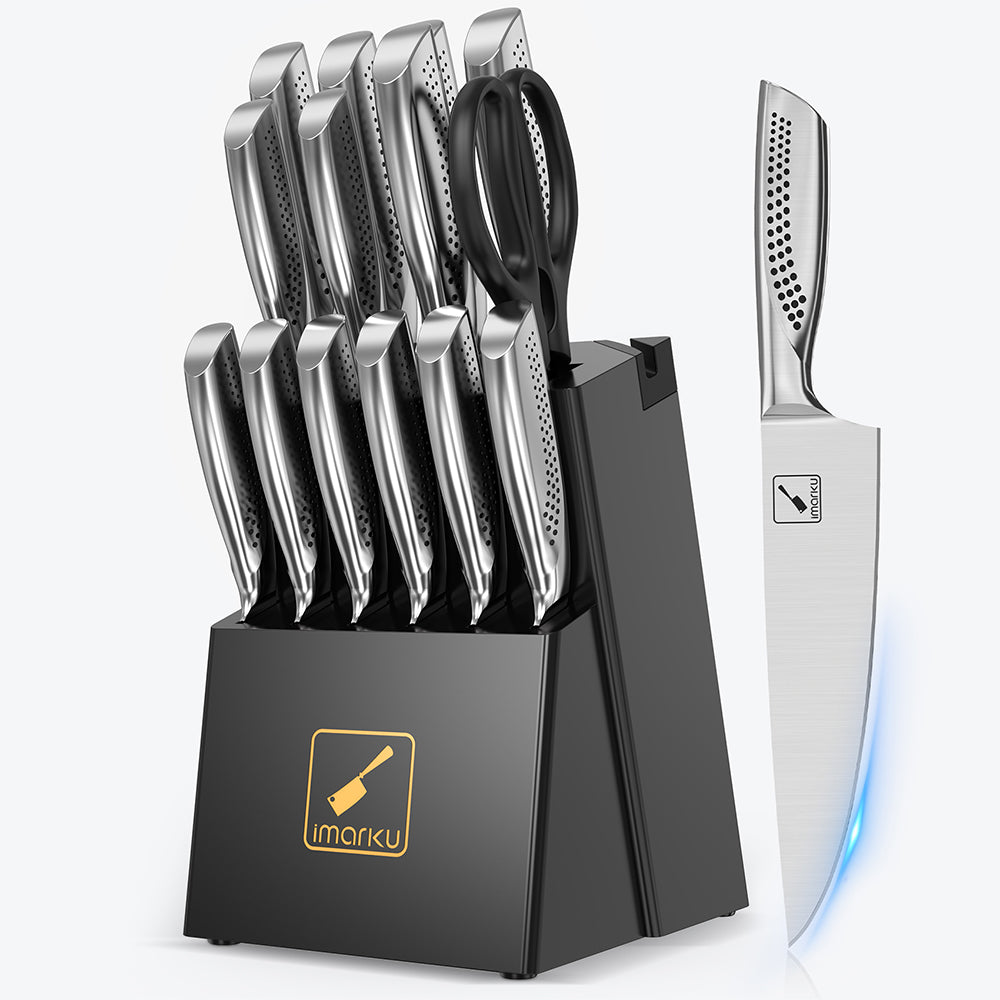

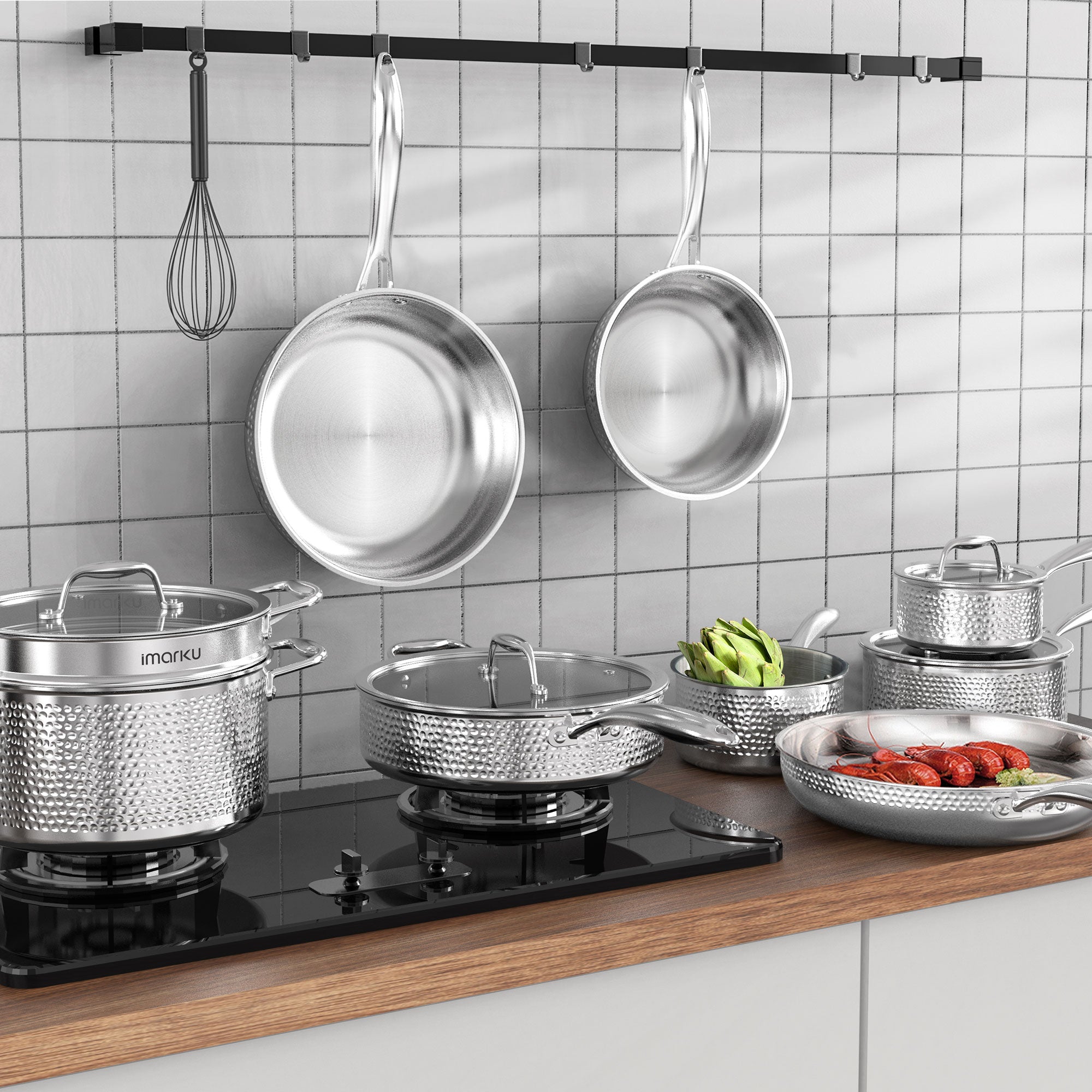
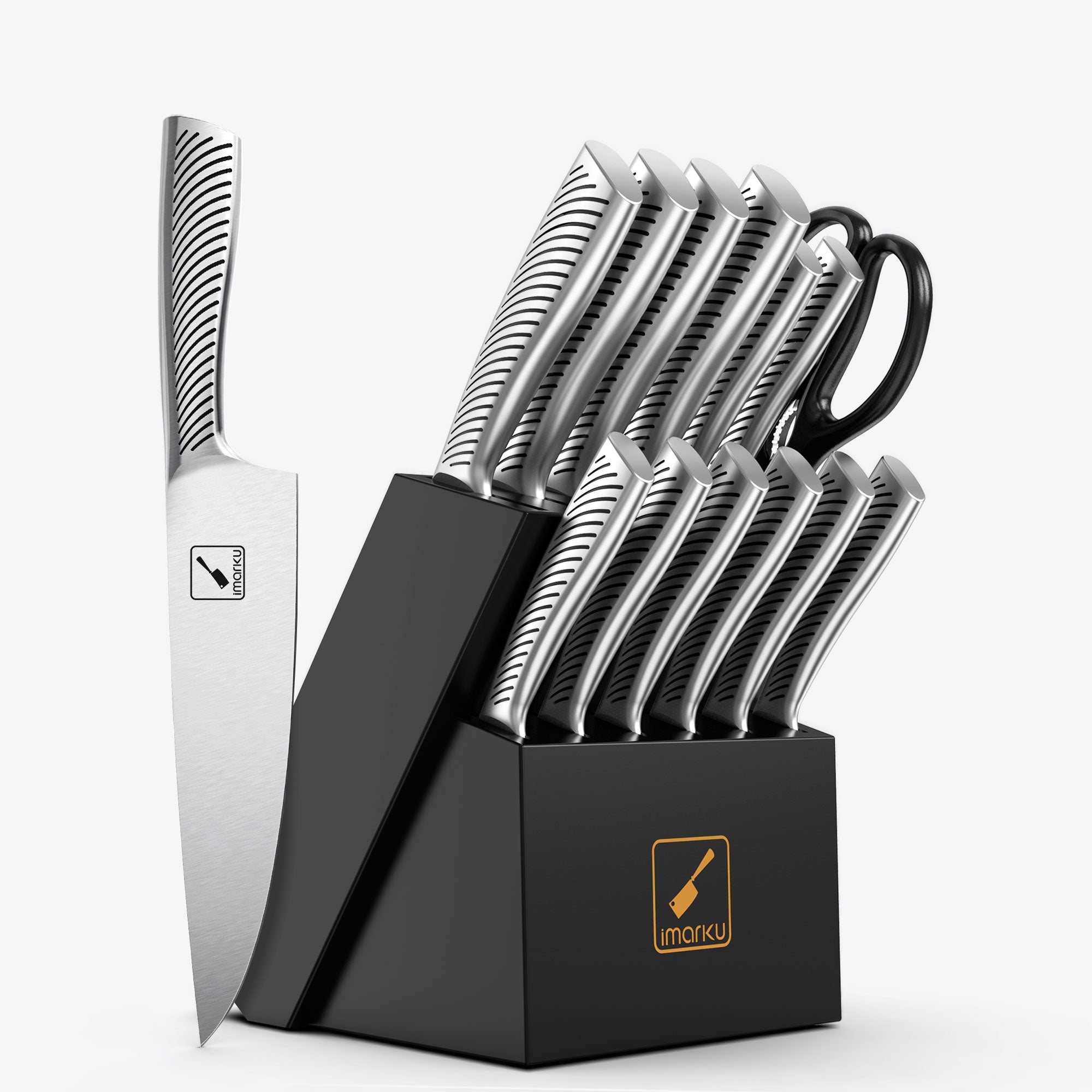
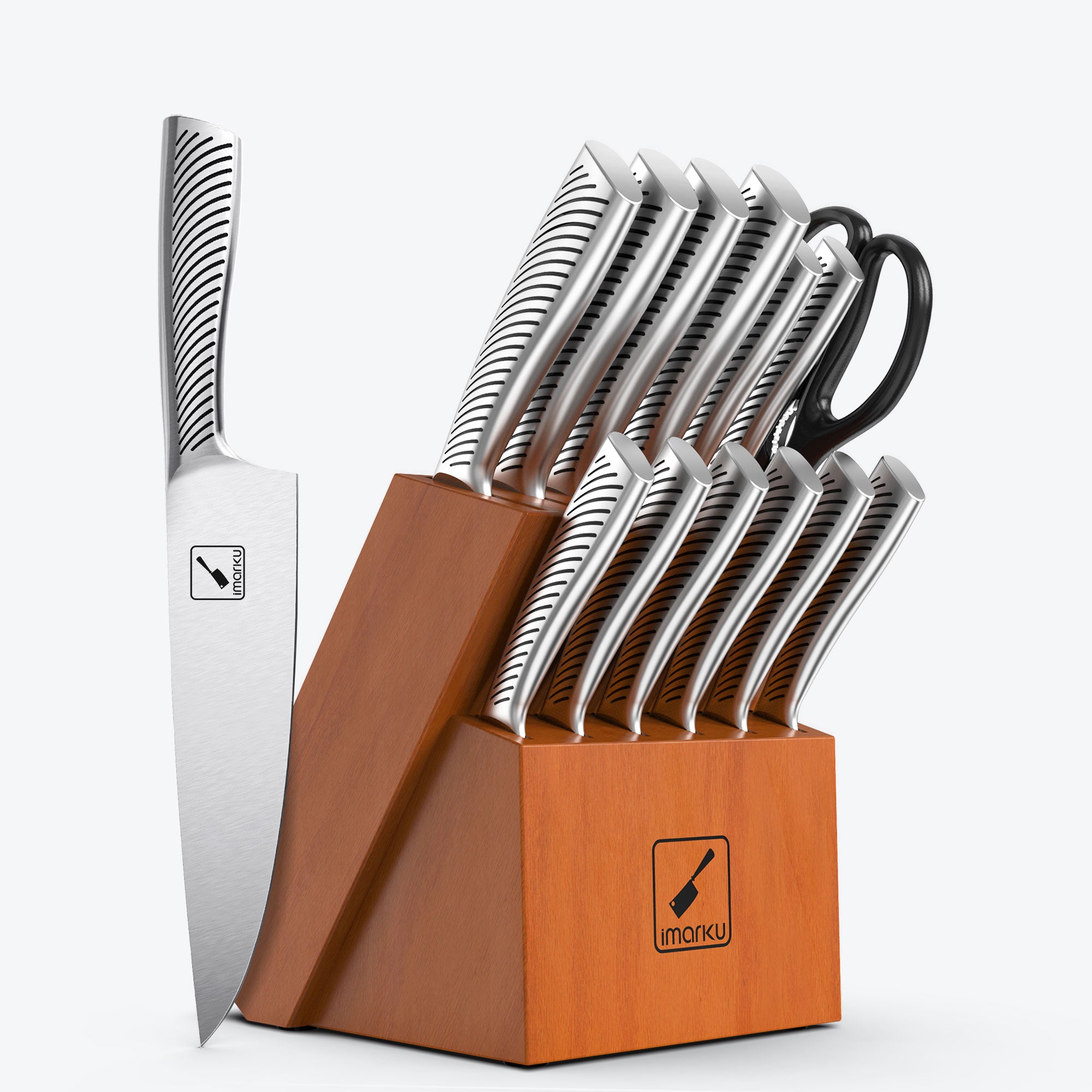
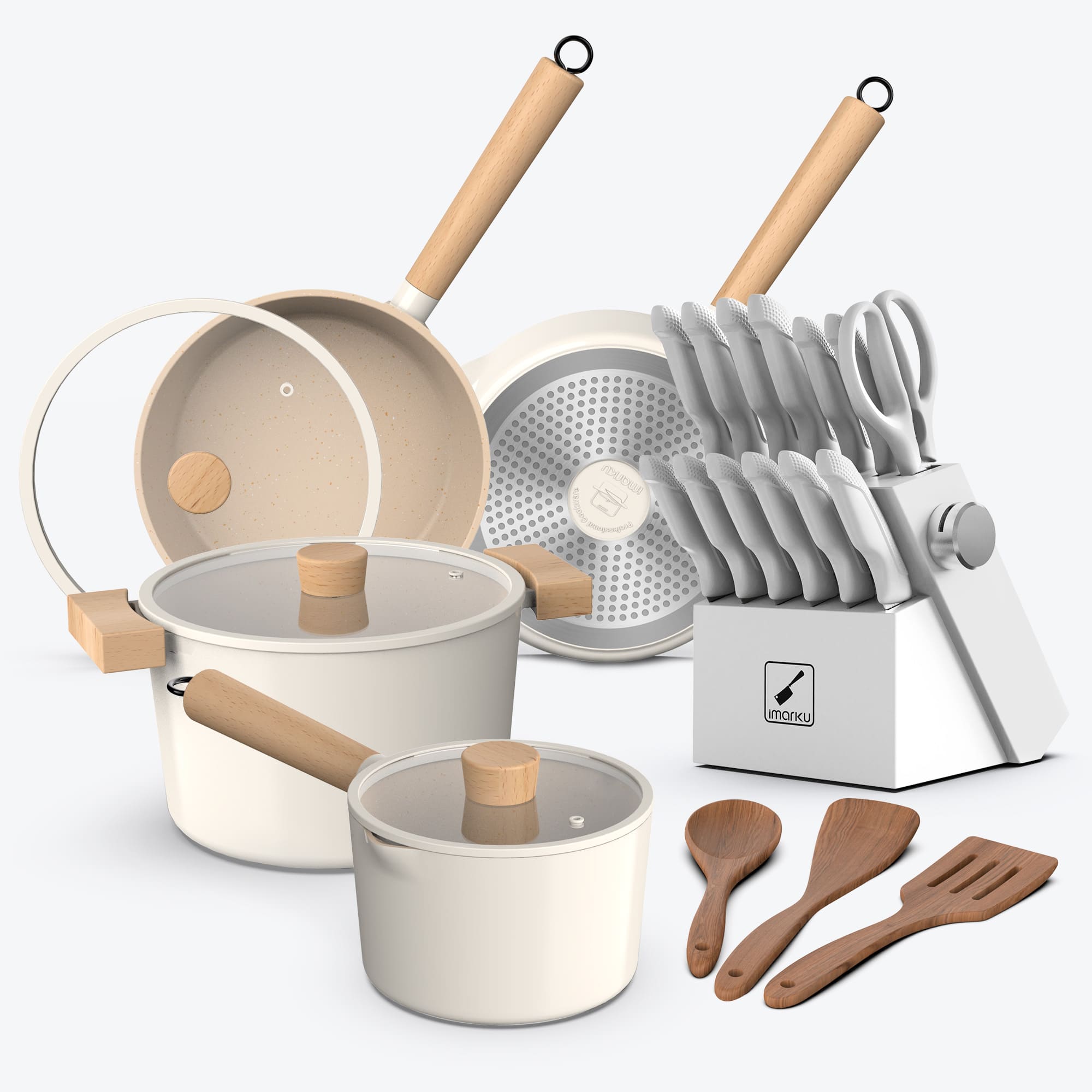
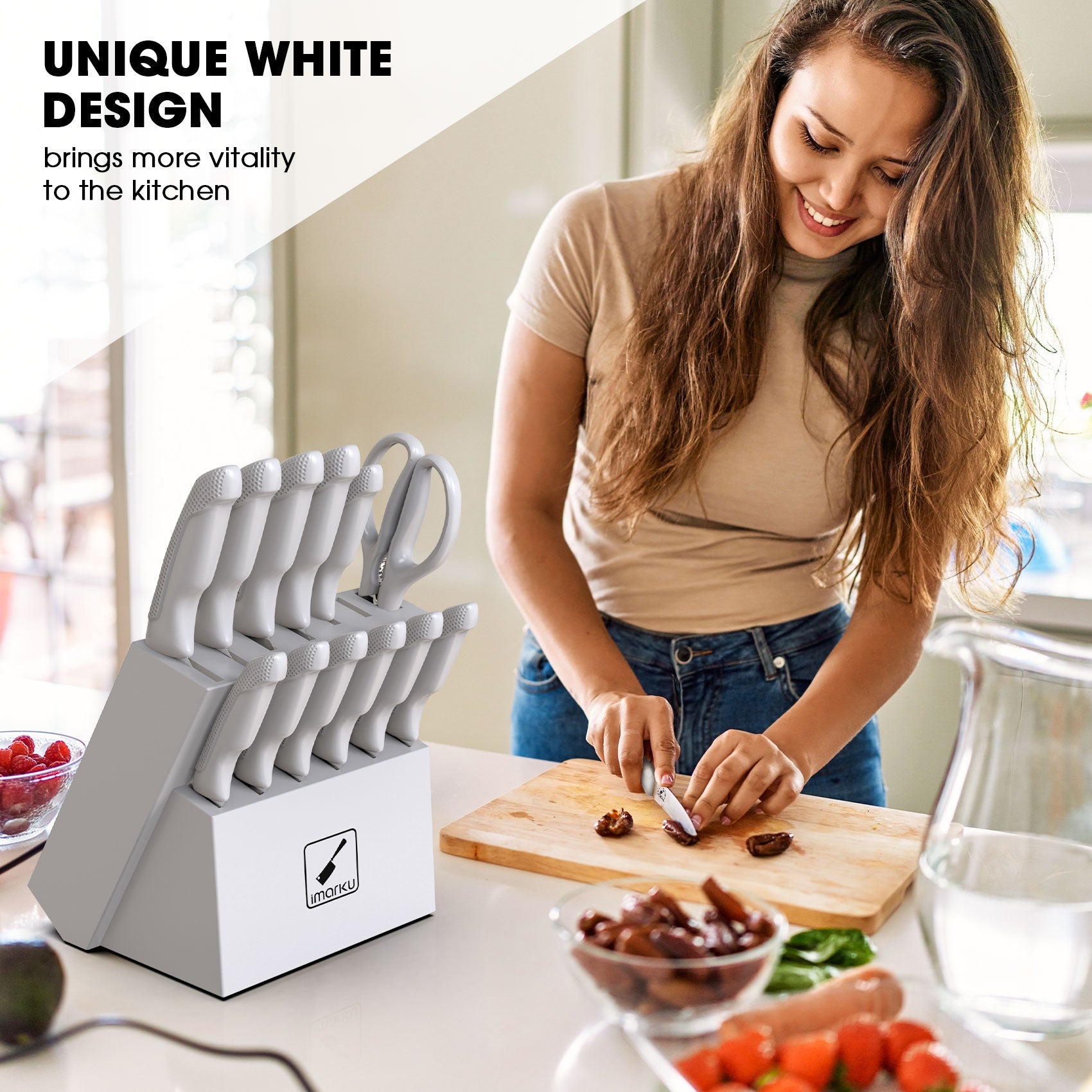
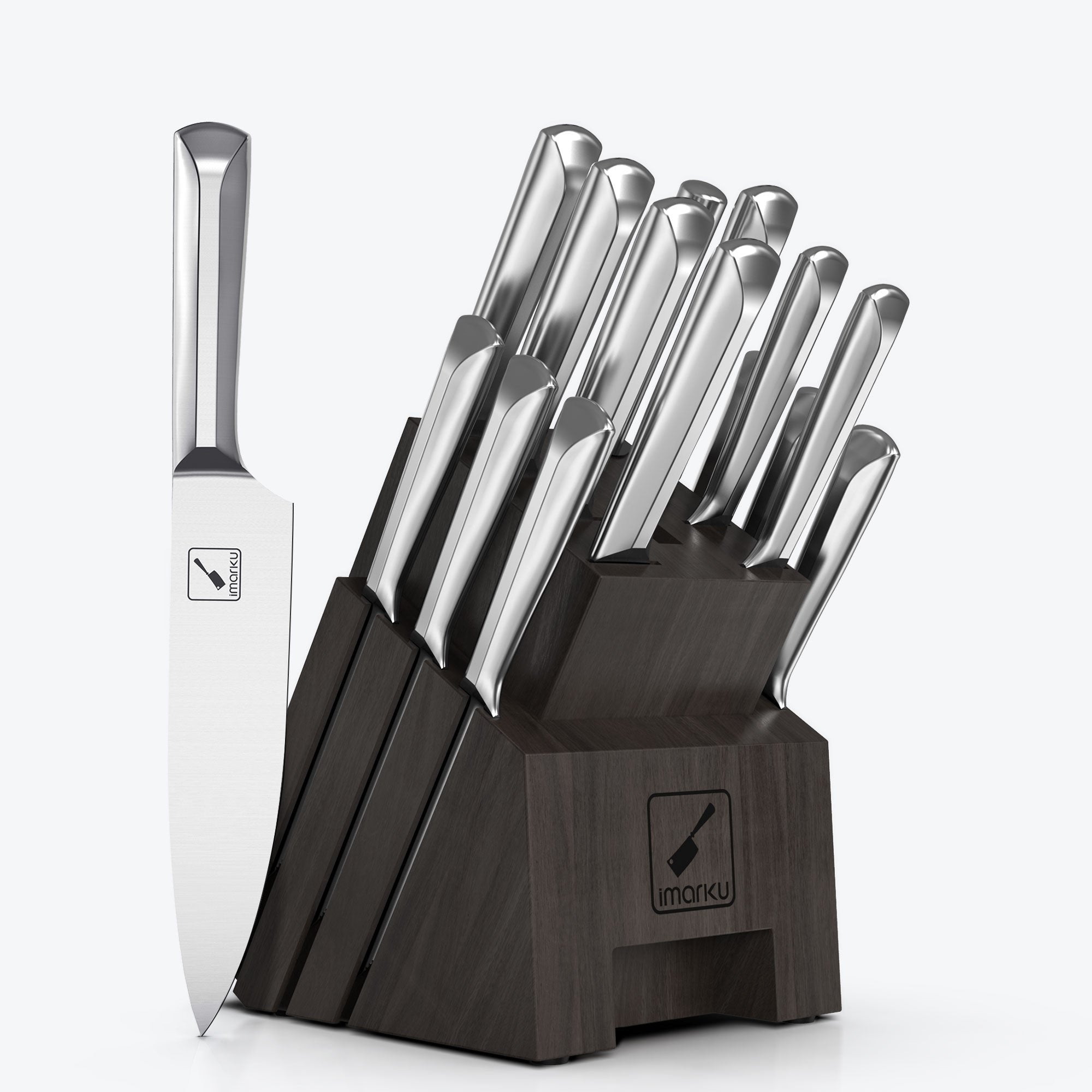
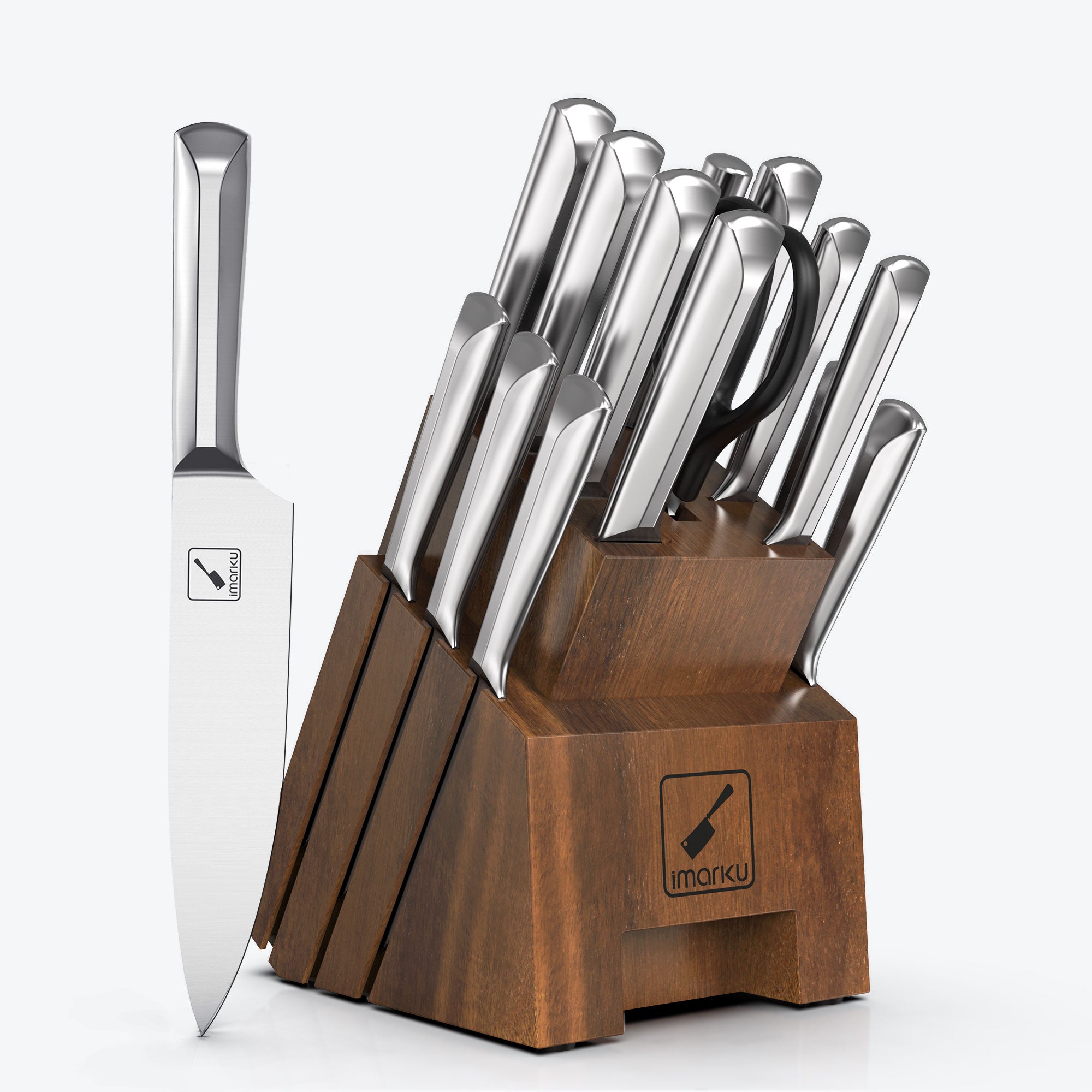
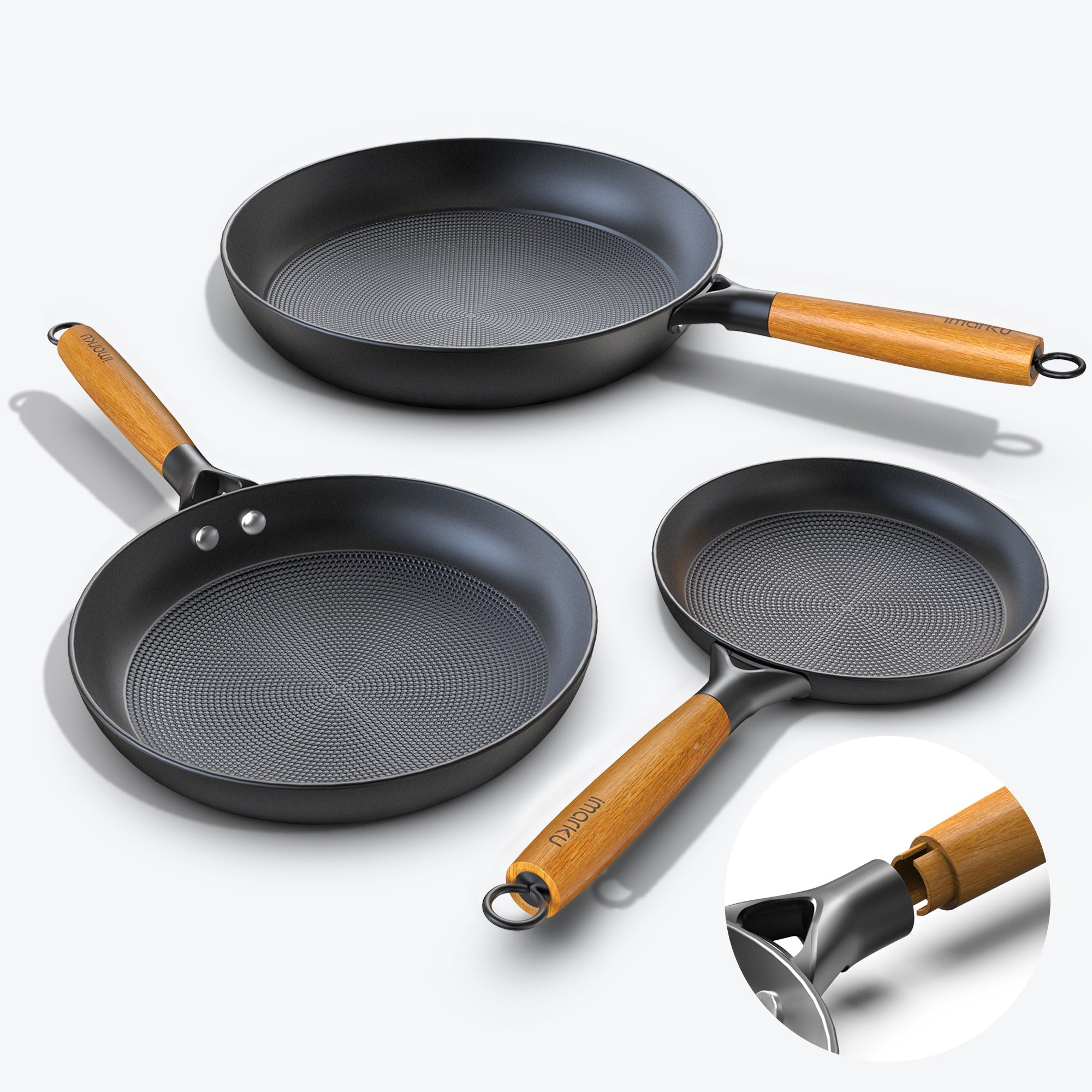
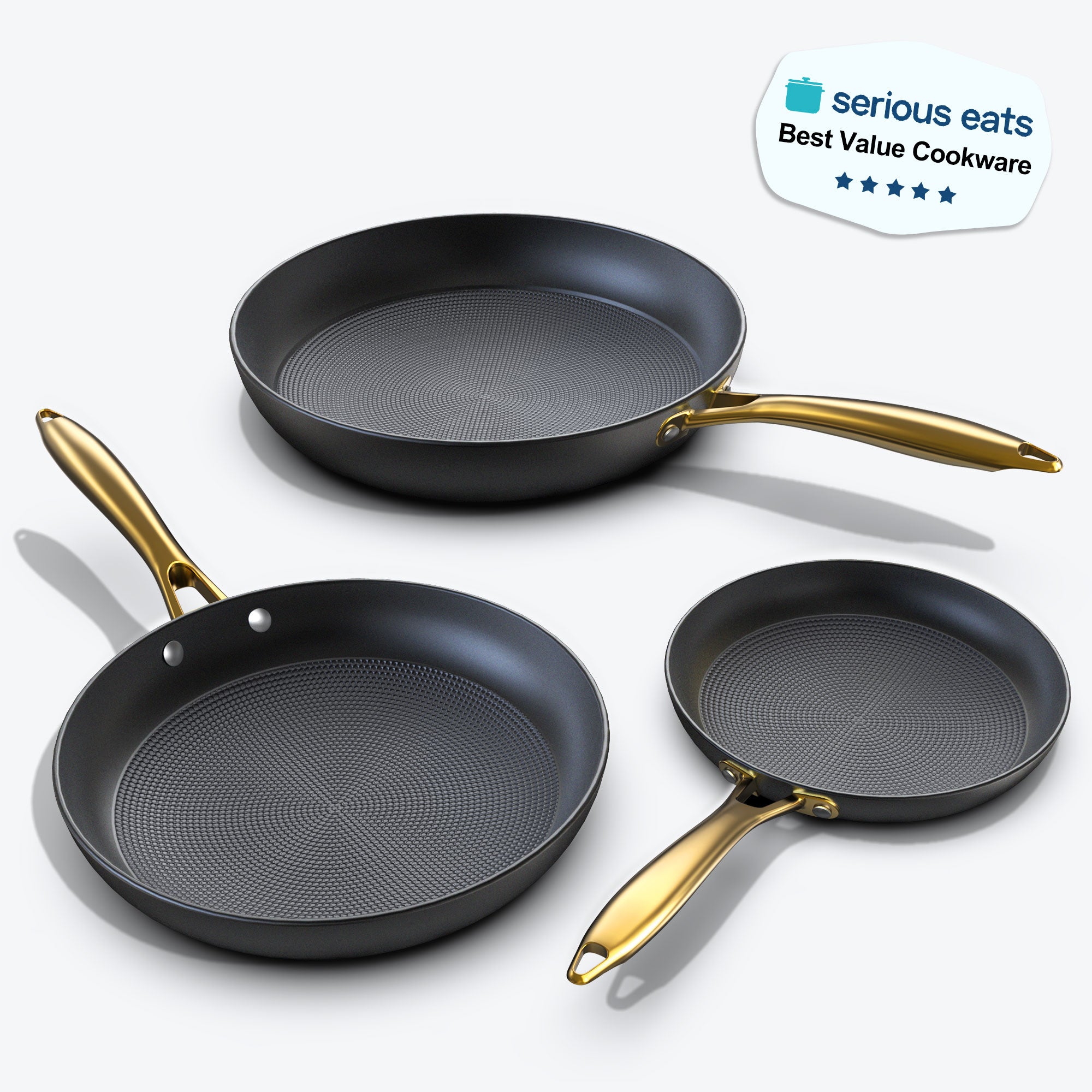
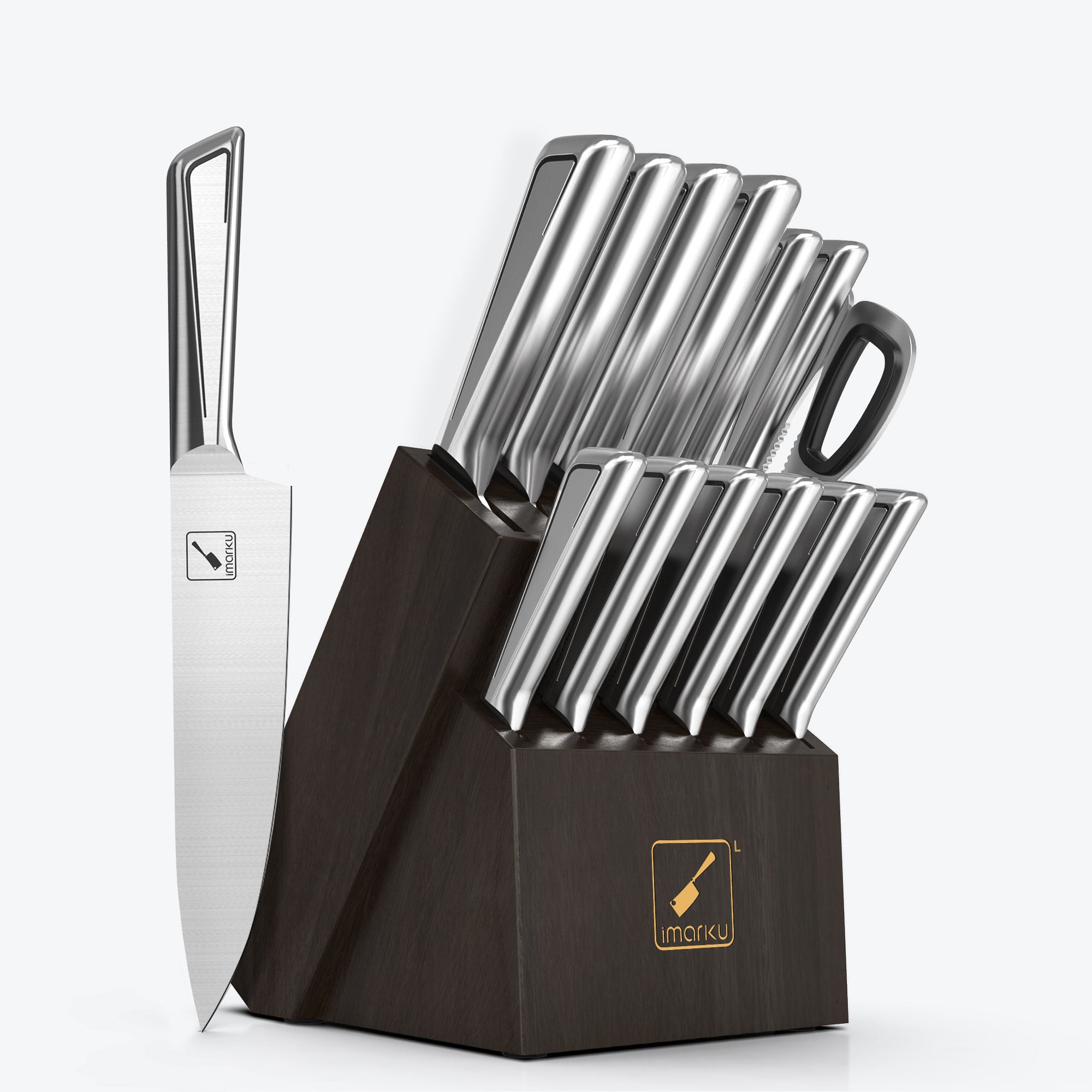
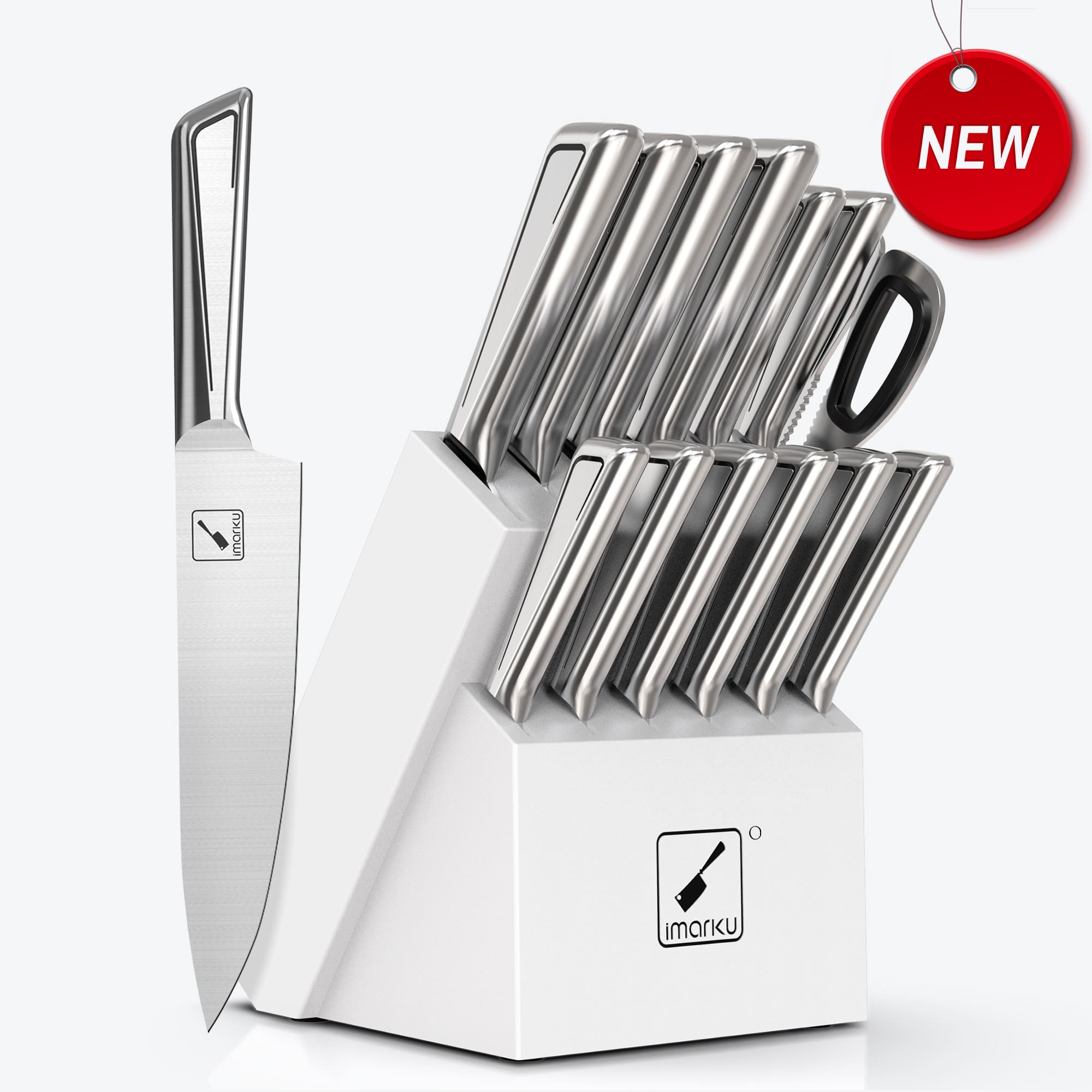
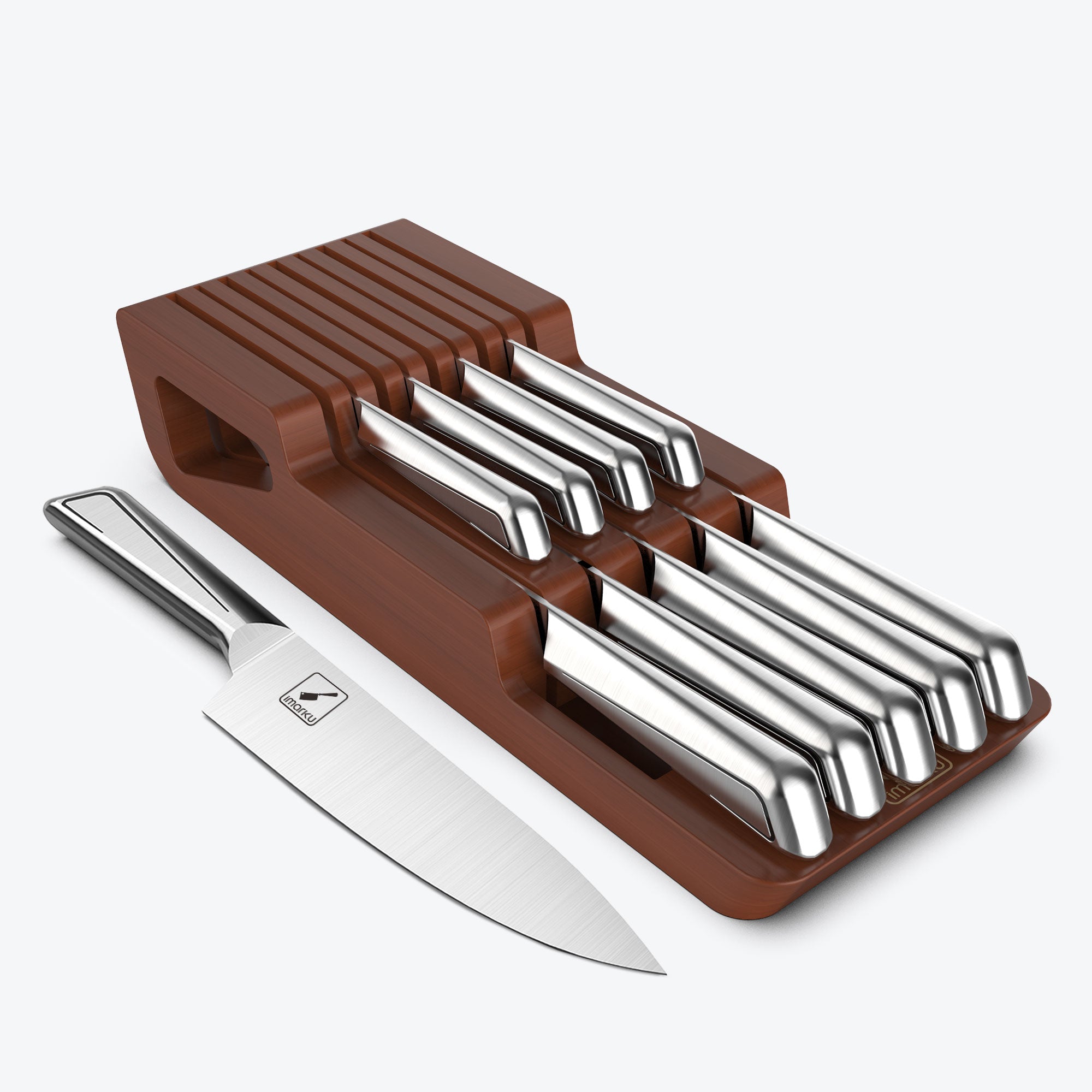
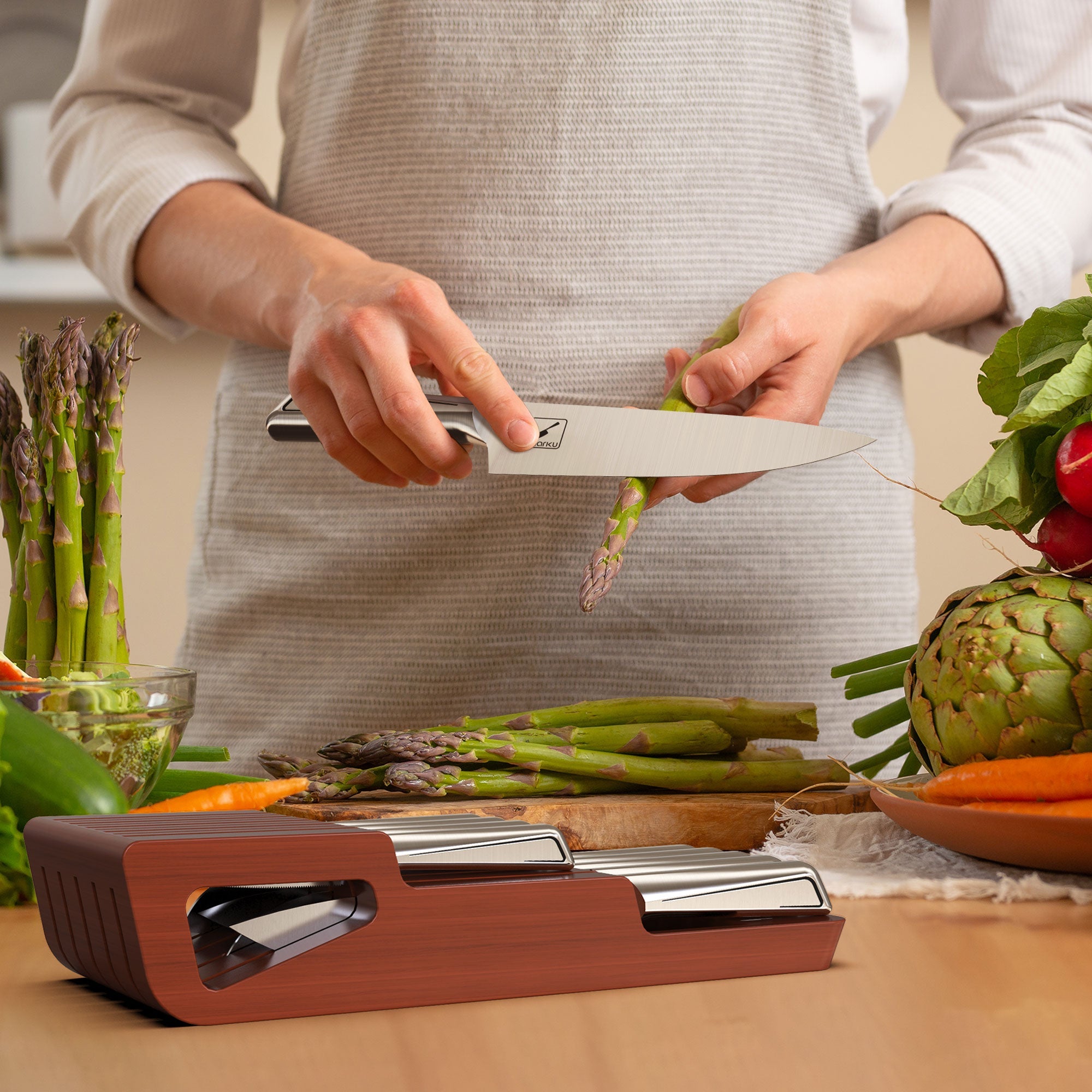
Leave a comment
All comments are moderated before being published.
This site is protected by hCaptcha and the hCaptcha Privacy Policy and Terms of Service apply.